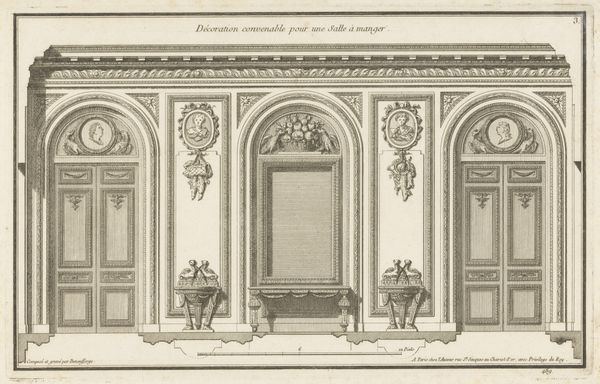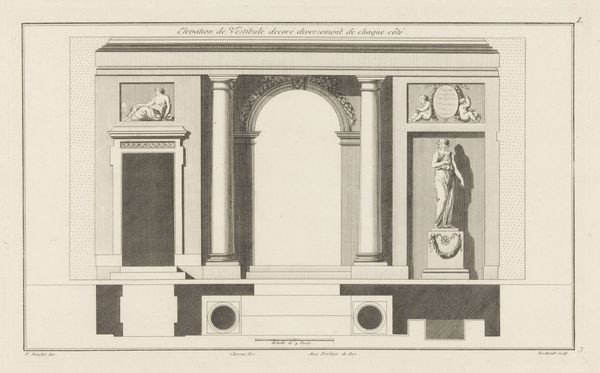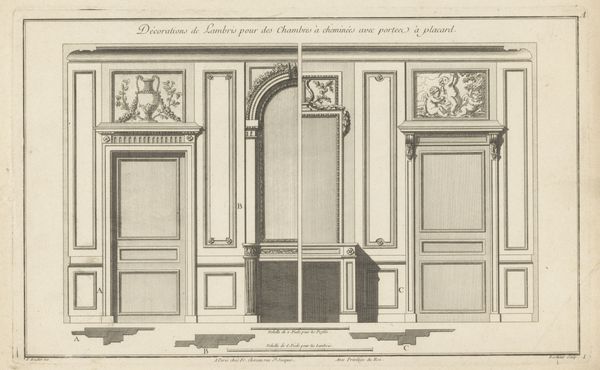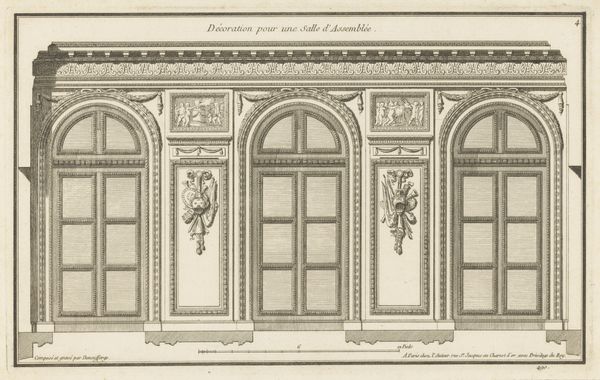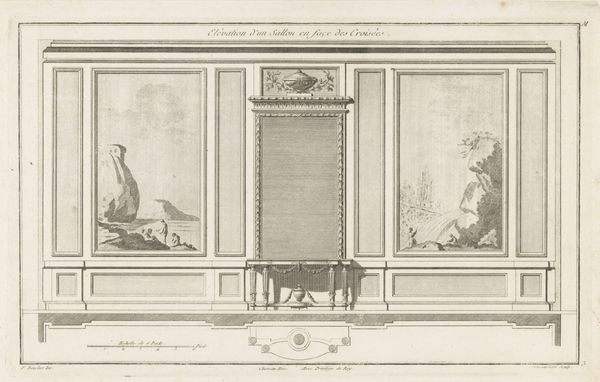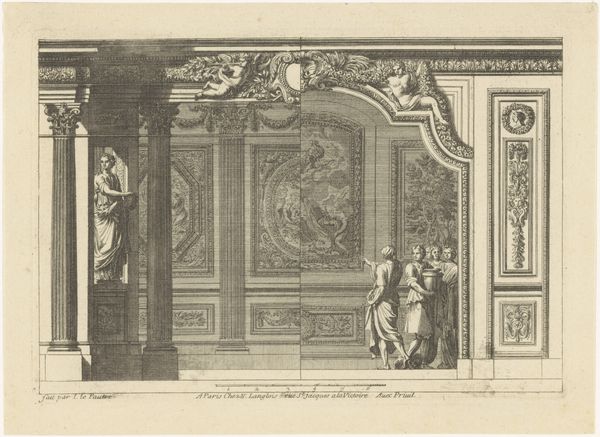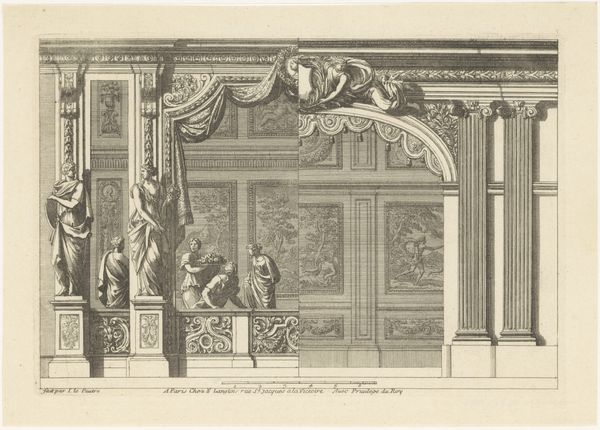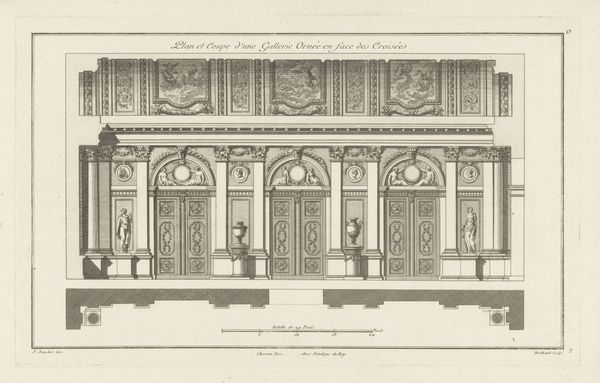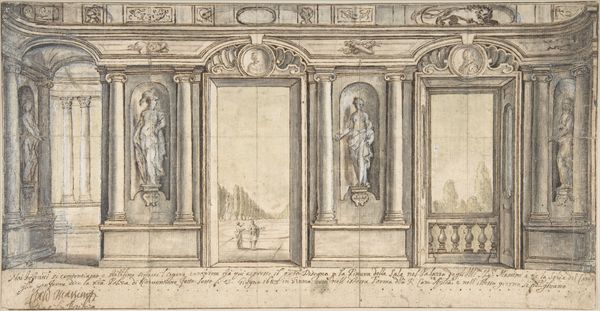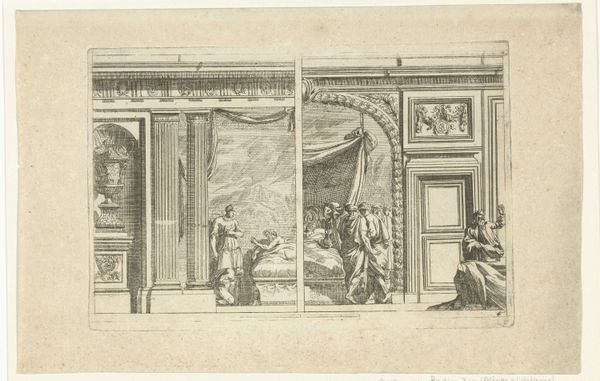
drawing, engraving, architecture
#
drawing
#
neoclacissism
#
landscape
#
form
#
line
#
engraving
#
architecture
Dimensions: height 229 mm, width 360 mm
Copyright: Rijks Museum: Open Domain
Curator: The engraving before us is titled "Vestibule," designed in 1767 by Jean Francois de Neufforge. Editor: It has a strikingly cool tone. A precise study in line and form that gives the suggestion of monumentality. The architecture reminds me of a stage setting with a central, imposing entrance flanked by quieter spaces. Curator: Precisely. Neufforge was known for his architectural fantasies, documenting them through meticulous drawings, etchings, and engravings like this. Notice the symmetry and order characteristic of Neoclassicism. Editor: Yes, and these aren’t merely doors, are they? With the portrait busts and urns above, the statuary—these become statements of status. The composition privileges power. Who inhabits, or more importantly, who is *denied* access to such a grand space? I think of gated communities today. Curator: An astute reading. One can view these design engravings through a critical lens, seeing these Neoclassical ideals representing a world carefully managed along clear, class-based boundaries. Editor: Indeed. It's an invitation to participate in a particular fantasy of aesthetic superiority, one expressed through very specific visual conventions. It feels instructive somehow, that such imagined places were once etched with this fine detail. Curator: Considering how these design ideas took hold during Neufforge's time helps us recognize the lingering influences today. Editor: It is a reminder that form follows ideology, even within these very exact linear configurations. Thank you, this look at 'Vestibule' gives cause to reconsider such enduring and aspirational architectures.
Comments
No comments
Be the first to comment and join the conversation on the ultimate creative platform.

